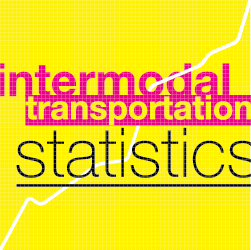It’s often debated which mode of transportation is the most efficient. It’s difficult and often inaccurate to compare and contrast each mode of freight transportation due to the enormous variables and inconsistencies in data. It’s unfair to compare the cargo weight of a cargo plane with the cargo weight of a fright train simply because they serve different purposes. A freight train doesn’t need to worry about flying over the ocean, for example.
It is interesting to see a few statistics for each freight transportation mode to get a feel for how efficient each of them can be. Check out these U.S. intermodal transportation stats.
Average Load Volume
- Trucks – 22.5 Tons
- Trains – 3,100 Tons
- Ships – 23,541 Tons
- Planes – 166 Tons
Average Freight Revenue per Ton-Mile
- Trucks – 16.54 ¢
- Trains – 3.76 ¢
- Ships – 1.83 ¢
- Planes – 121.74 ¢
Value Transported by Mode
- Trucks – 70% of total U.S. value
- Trains – 3% of total U.S. value
- Ships – 41% of total trade (Imports & Exports) value
- Planes – 27% of total U.S. value
Overall Load Share (Weight)
- Trucks – 60% of total U.S. cargo
- Trains – 10% of total U.S. cargo
- Ships – 78% of total trade (Imports & Exports) cargo
- Planes – Less than 1% of total U.S. cargo
What are the World’s Largest?
- Truck – Tractomas TR 10 x 10 D100 (600 Ton Hauling Capacity)
- Train – Australian BHP Iron Ore Train (4.568 Miles)
- Ship – Seawise Giant (1503 Feet)
- Plane – Antonov An-225 Mriya (705,479 Tons)
Are your stats different than ours? Share with us on Twitter!
Sources:
www.udot.utah.gov/truck-stopping-distance
www.rita.dot.gov/freight-in-america
en.wikipedia.org/wiki/Container-Ship
www.worldshipping.org/US-Export-Facts
www.rita.dot.gov/national-transportation-statistics
www.guinnessworldrecords.com/largest-semi-truck
en.wikipedia.org/Antonov-An-225-Mriya


